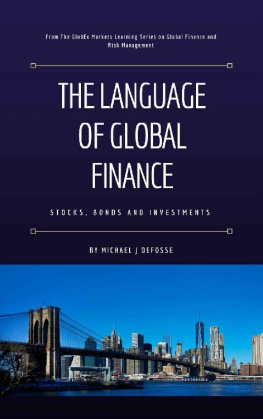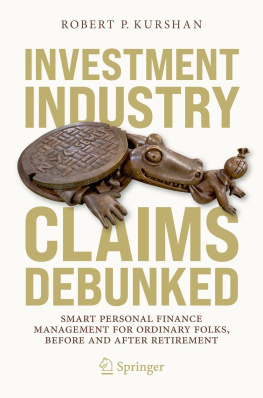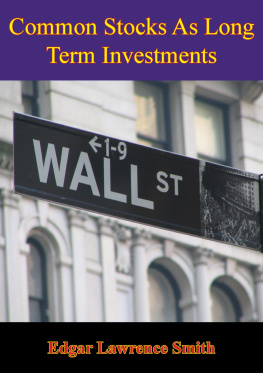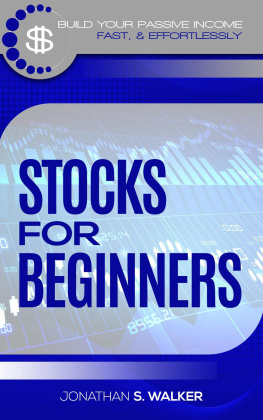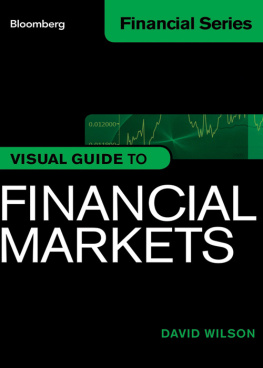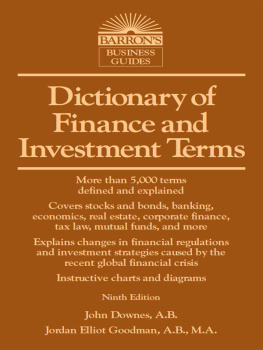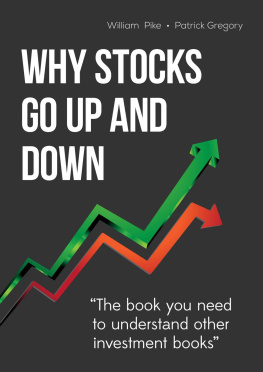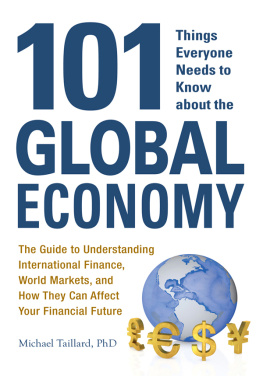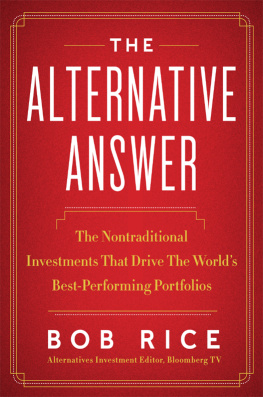The Language of Global Finance:
Stocks, Bonds and Investments
By Michael J. Defosse
Copyright 2017 by Michael J. Defosse
Cover Photo Copyright 2017 by Ktlin Kool
All rights reserved. No part of this publication may be reproduced, stored in a retrieval system, or transmitted in any form or by any means, electronic, mechanical, photocopying, recording, scanning, or otherwise, except as permitted under Section 107 or 108 of the 1976 United States Copyright Act, without the prior written permission of the author.
Limit of Liability/Disclaimer of Warranty: While the author has used their best efforts in preparing this book, the author makes no representations or warranties with respect to the accuracy or completeness of the contents of this book and specifically disclaim any implied warranties of merchantability or fitness for a particular purpose. No warranty may be created or extended by sales representatives or written sales materials.
Published by GlobEx Markets Media, a division of GlobEx Markets Ltd. For more information on GlobEx Markets Ltd services and resources, please visit .
Printed in the United States of America
First Edition
Table of Contents
Preface
An investment in knowledge pays the best interest.
- Benjamin Franklin
As a lifelong student of investment management and global finance, I realized a long time ago that there is always something new to learn that can help you to research, understand and improve your investment and risk management decision-making.
When some exchanges or markets are closing, others are opening. A typhoon in southeast Asia can have as much an effect upon Asian markets as an unexpected Federal Reserve interest rate hike in the United States. The common thread between these situations is that knowledge can help you to more quickly improve investment decisions and to mitigate risk.
While some believe that financial terms and phrases may not be the best learning tool, an understanding of the fundamentals of investment and risk management terminology are more valuable than ever due to the large number of trading venues.
Globally, there are more than 200 stock exchanges that trade over 600,000 listed companies. There is also a significant number of exchanges for trading commodities and derivative products. Turkey alone having over 100 commodity exchanges.
While many concepts and terms are standardized, each market and exchange will have its own unique slang or language to understand. At the end of the day, a massive amount of information flows between markets and investors. There are valuable benefits to those that have a better understanding on the global language of investment and finance.
The GlobEx Markets Learning Series on Global Finance and Risk Management is an educational resource that provides the fundamental building blocks to help you better understand the language of global finance and risk management. In addition, it introduces trading strategies, risk management techniques and financial tools that are beneficial to students, investors, industry professionals and all who just want to better understand how the financial world operates.
Acknowledgment
One gratification that comes with completing a book is that I can thank the ones that have helped contribute to the content as well as those that have been influential and supportive over the years, helping me to believe that anything can be accomplished. My gratitude and appreciation are not limited to those listed as my support extends to academia and the financial industry, both of which having contributed to this valuable resource.
There were many resources and organizations that contributed to the content of this book and while not limited to the following resources, the key contributors include Bloomberg, CFA Institute, Dow Jones Publications, Financial Times, Institute of Islamic Banking and Insurance, Investopedia, NASDAQ, Reuters, Standard & Poors, Syracuse University Whitman School of Management and the United Nations Investment Management Division. There are other contributors that I wish to extend my thanks to, which I have listed and acknowledged in the bibliography.
The last acknowledgement is by far the most important. Ktlin Kool has shared my dream since the beginning. She has witnessed the highs and the lows, always supporting me along the journey. Without her, this book and GlobEx Markets Ltd may still be just a dream. In addition to her important counsel and guidance, I also have her full support as my loving wife.
To all of those who I have mentioned and the many others that have been a part of this journey, I want to extend my sincerest thank you.
Michael J Defosse
About the Author
Michael J Defosse is the Founder and CEO of GlobEx Markets Ltd, which is founded upon the fundamental principles of knowledge, access and opportunity. He grew up in upstate New York and attended nearby Syracuse University, where he completed his Bachelors, Masters in Finance and Masters of Business Administration (MBA) degrees.
During the past 30 years, he has held roles ranging from business development to leadership in the investment and risk management industries. His experience during this time has provided him with industry knowledge and a broad global business insight that is shared in this resource. This is his first book in a planned series focused upon global investment and risk management.
Non-Alphabetical
A good decision is based on knowledge and not on numbers.
- Plato
8-K: A report of unscheduled material changes, submitted to the United States Securities and Exchange Commission (SEC), of a publicly traded company that could be of importance to the shareholders or the SEC. The report provides public notice of events, which may include acquisitions, bankruptcy , resignation of directors or a change in the fiscal year .
10-K: A comprehensive annual summary report, submitted to the United States Securities and Exchange Commission (SEC), of a publicly traded company's structure and their performance. The report provides more detail than the company generated annual shareholder report .
10-Q: A quarterly report, submitted to the United States Securities and Exchange Commission (SEC), which provides a continuing view of a publicly traded companys financial position.
12B-1 Fees: The fee associated with mutual funds that is removed from a funds assets to compensate brokers or other distributors for marketing and various shareholder services.
52 Week High: The highest close of the daily price achieved by a security during the past year.
52 Week Low: The lowest close of the daily price achieved by a security during the past year.
144A Private: A class of privately placed securities for which the United States Securities and Exchange Commission (SEC) resale restrictions are eased, allowing them to be freely traded among Qualified Institutional Buyers (QIB), thereby making them more liquid. See Qualified Institutional Buyer.
Knowledge is power.
- Francis Bacon
A Round Financing: The first major round of business financing by private equity investors or venture capitalists. In private equity investing, an A Round or Series A financing, is usually in the form of convertible preferred stock.
A-Note: The highest tranche of an asset backed security or other structured financial instrument which also carries seniority to other notes for the same underlying asset.
A-Shares: The shares in mainland Chinese companies listed on the stock exchanges of Shanghai and Shenzhen. While foreign investment is restricted, it is allowed under the Qualified Foreign Institutional Investor (QFII) program.

